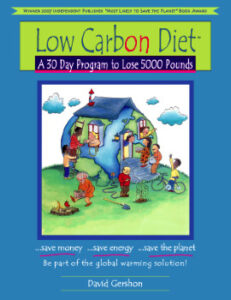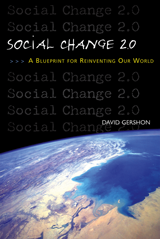COOL COMMUNITY CORPS
A Program Empowering Students to Take Action on Climate Change in Their Community

The Cool Community Corps is an opportunity for students to have a real and measurable impact on global warming while gaining valuable leadership and community organizing skills. Employing a proven carbon-reduction program and community engagement strategy, it provides students the tools and support to become a powerful force for change on a local level.
OVERVIEW OF PROGRAM
No challenge that humanity has faced could have prepared us to meet the climate crisis. Arresting global warming before it’s too late has emerged as nothing less than the central organizing project for our civilization. As the scientific data pours in, it has become clear that we have to act now to bring about a reduction in our carbon emissions.
In the face of this crisis, people around the world are rallying to find solutions. But the large-scale solutions many are pinning hope on—renewable energy and new technologies—will take a long time to scale up; much more time than scientists tell us we have.
There is, however, one solution that has the potential to bring about significant large-scale carbon reductions in the short term: household energy conservation. Over half of America’s carbon footprint and between 50 and 90 percent of a community’s footprint is created by the energy we use to power our homes and cars. And America representing 20 percent of the planet’s greenhouse gas emissions and epitomizing the high carbon lifestyle, is a lynchpin for any global solution. If we can demonstrate how to scale up household carbon reduction in an American community it will serve as a role model to other communities. Because of the solution vacuum, this model will disseminate quickly to other communities both in America and around the world. But how can we do this?
The tools are now in place to help a community empower citizens to reduce their carbon footprint. Empowerment Institute has developed through three decades of research a proven behavior change and community engagement methodology. It has helped millions of households around the world to reduce their environmental footprint and trained hundreds of communities to implement this methodology.
This methodology has now been applied to the issue of global warming. It is built around the award-winning Low Carbon Diet: A 30 Day Program to Lose 5,000 Pounds and its Cool Community Campaign strategy. The program provides households with simple tools to measure and reduce their carbon footprint with the support of a peer-support called an EcoTeam. Participating households reduce their carbon footprint by up to 25 percent. The Cool Community Campaign organizing model engages residents on a block-by-block basis and has demonstrated the ability to get 25 percent of a block to participate.
HOW THE PROGRAM WORKS
The Cool Community Corps provides students with the community organizing strategies and tools to implement a Cool Community Campaign in their town or city. They use these tools to empower the local government, community and faith-based groups, businesses, and individual citizens to from Low Carbon Diet EcoTeams.
This Cool Community Corps provides students the opportunity to build and hone valuable leadership, empowerment and community organizing skills while contributing to the most critical issue facing humanity’s and their future.
Students gear their efforts toward achieving the following concrete carbon reduction goals:
- Silver Level: Start five EcoTeams per participating student or two-person team. (8 households per team x 5 teams = 40 households x 5,000 pounds = 200,000 pounds of carbon reduction per year)
- Gold Level: Start ten EcoTeams per participating student or two-person team. (8 households per team x 10 teams = 80 households x 5,000 pounds = 400,000 pounds of carbon reduction per year)
- Platinum Level: Start twenty-five or more EcoTeams per participating student or two-person team. (8 households per team x 25 teams = 200 households x 5,000 pounds = 1,000,000 pounds of carbon reduction per year)
WATCH VIDEO: LOW CARBON DIET
INSTITUTION BENEFITS AND RESPONSIBILITIES
Participating in the Cool Community Corps is a powerful way for the hundreds of colleges and universities that have signed the American College & University Presidents’ Climate Commitment to fulfill the educational and community engagement aspects of the commitment. It provides a platform for offering a valuable service to the local community and helps foster positive “town-grown” relationships. And it enables a college or university to be on the cutting edge of concrete action to abate global warming. The Cool Community Corps can also be organized in high schools and environmental clubs.
The two primary ways to set up a Cool Community Corps are either as a for-credit service-learning program or as an extracurricular activity of an environmental club or youth chapter of an existing environmental organization.
DEEPER DIVE
PURCHASE LOW CARBON DIET WORKBOOK
 Low Carbon Diet:
Low Carbon Diet:
A 30 Day Program to Lose 5,000 Pounds
by David Gershon
The core tool of the Cool Community Campaign.
LOW CARBON DIET AND THE COOL COMMUNITY
 Learn about the social change framework and research underpinning the Low Carbon Diet program in David Gershon’s award-winning book Social Change 2.0: A Blueprint for Reinventing Our World.Chapter 11 of the book is a case study of the Low Carbon Diet behavior change program and Cool Community empowerment model on which the Low Carbon Diet program is based.
Learn about the social change framework and research underpinning the Low Carbon Diet program in David Gershon’s award-winning book Social Change 2.0: A Blueprint for Reinventing Our World.Chapter 11 of the book is a case study of the Low Carbon Diet behavior change program and Cool Community empowerment model on which the Low Carbon Diet program is based.
AUDIO INTERVIEWS WITH DAVID GERSHON
Note: audio files will take a few moments to load into the popup, please be patient.
![]() Low Carbon Diet Lifestyle, What Will It Take?
Low Carbon Diet Lifestyle, What Will It Take?
LOW CARBON DIET TESTIMONIALS

“David Gershon has created a step-by-step program, à la Weight Watchers, designed to reduce a person’s carbon footprint. . . . Replete with checklists and illustrations, this user-friendly guide is a serious attempt at changing American energy-consumption behavior. . . . The timing for a book offering day-to-day solutions to an overwhelming global problem couldn’t be better.”
— The Christian Science Monitor